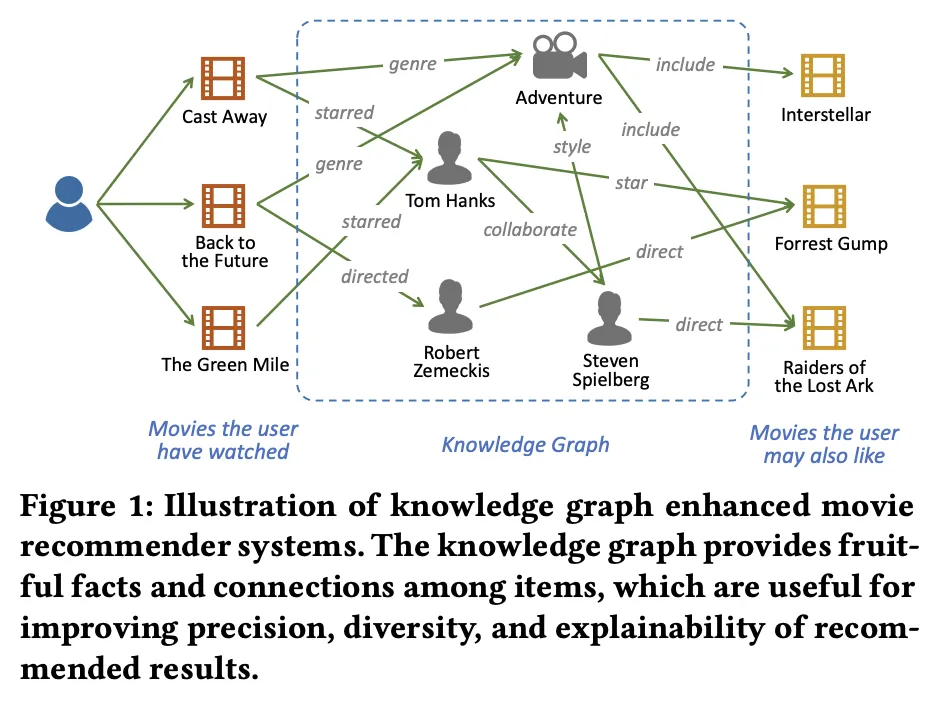6.0 Knowledge Graph(KG) intro
•
Social network : user representation 잘 뽑기 위해 users relationships 반영
•
KG : item representation 잘 뽑기 위해 items(attribute-속성) relationships 표현
•
KG를 추천에 활용 시 장점
1.
아이템 사이의 풍부한 의미론적 관계를 탐색, 활용 가능
2.
유저의 과거 사용 상품(상품과의 상호 작용), 추천 항목 정보를 이용해 추천 결과의 해석가능성을 높임
•
하지만 KG의 복잡한 그래프 구조 때문에 활용 쉽지 않음
◦
이전 연구 : knowlege grapph embedding (KGE) method로 KG 전처리 → link prediction에 효과적이지만 추천에는 부적합
•
KG 외에도 user-item interaction 정보까지 주어졌을 때 보다 효과적
◦
유저 선호도 예측에 필요한 item 사이의 관계성 explicitly capture 가능
Reference : RippleNet
•
KGR의 주요 이슈
1.
Graph Construction
a.
user-item 상호작용에 내포된 collaborative signal과 와 KG의 의미적인 정보를 어떻게 효과적으로 통합?
b.
유저 노드를 명시적으로 KG에 통합할 것이지, 혹은 관계의 중요성을 구별하기 위해 유저 노드를 implicit하게 사용?
2.
Relation-aware Aggregation
a.
KG의 한 특징은 entities 사이에 관계가 여러 type으로 이루어짐
b.
이러한 연결된 entity들 사이의 정보를 통합하기 위해 relation-aware aggregation function을 어떻게 디자인?
6.1 Graph Construction
•
How to effectively integrate the collaborative signals and knowledge information?
1.
user node를 KG에 통합 (unified graph)
Reference : Hierarchical Attentive Knowledge Graph Embedding for Personalized Recommendation
•
unified graph를 구성하는 다양한 연구 - KGAT, MKGAT, CKAN, AKGE …
2.
user node를 implicit 하게 사용 - 서로 다른 관계들의 중요도 구별 / ex) KGCN, KGNN-LS
Reference : KGNN-LS
•
user-item subgraph 방식은 관련있는 entity와 관계에 대해 집중할 수 있다는 장점이 있지만, computation time 더 많이 필요하고 subgraph 구성에 따라 성능이 depend 되어 아직 더 많은 연구 필요
6.2 Relation-aware Aggregation
•
KG의 의미적인 정보를 제대로 사용하기 위해서는 linked entities, relations 모두 propagation process에 고려되어야 함
•
ex) KGAT : relation에 weight 할당
•
: transformation matrix for the relation, which maps the entity into relation space
•
the closer entities would pass more information to the central node
•
user node를 포함하는 subgraph에 적용하는게 더 적절




